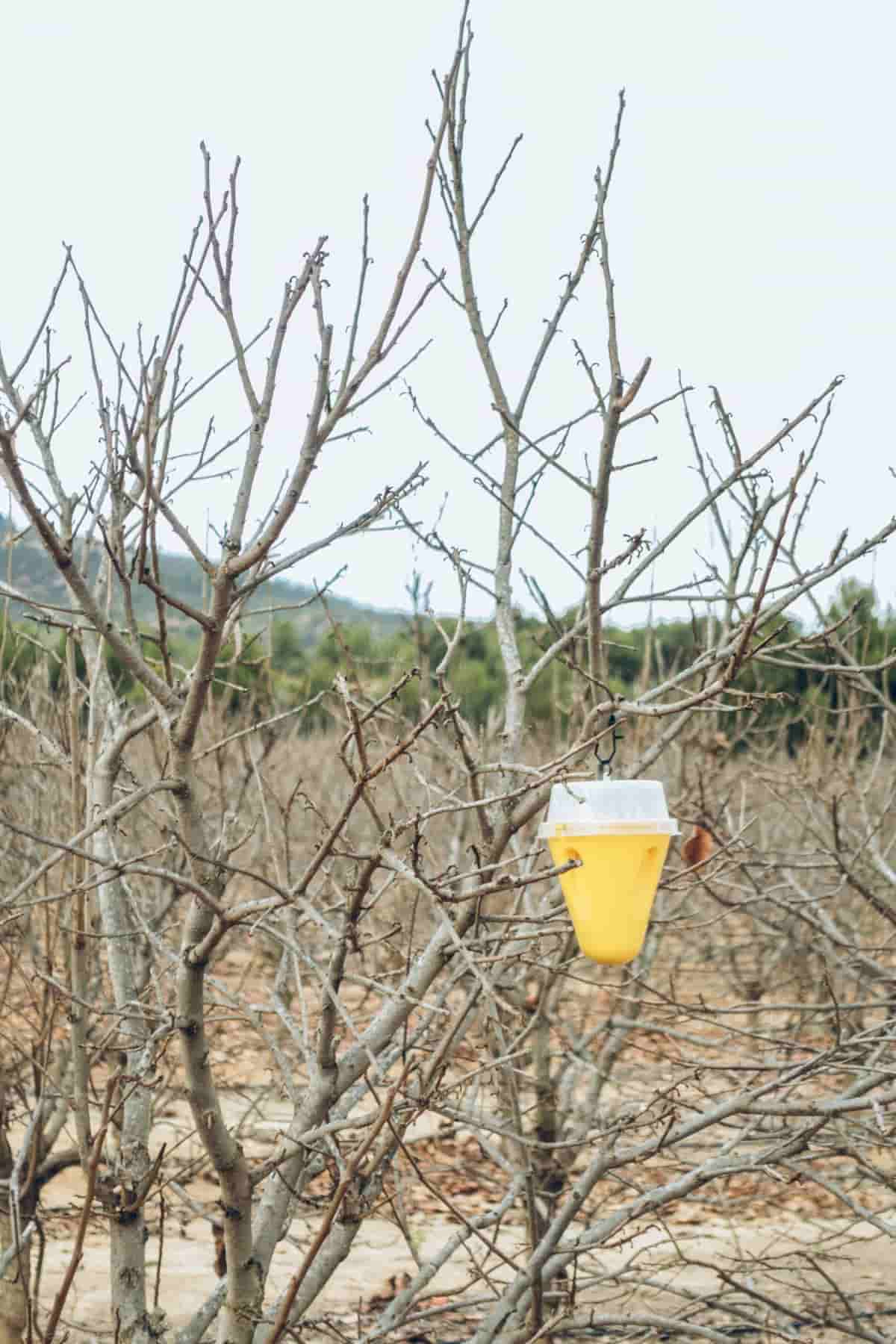Insects are an integral part of our ecosystem, but when they become pests, it’s essential to find solutions that maintain the delicate balance of nature. This blog post will delve into eco-friendly insect control, where science and sustainability converge. Get ready to uncover preventive measures, natural allies, botanical wonders, and integrated pest management strategies that protect your plants.
Eco-Friendly Insect Control Methods
What is ‘Eco-friendly’ Pest Control?
Eco-friendly pest control is employing methods and procedures to eliminate or manage pests while causing the least negative damage to the environment, human health, and non-target creatures. Unlike conventional pest control methods that heavily rely on chemical pesticides, eco-friendly approaches prioritize natural and sustainable solutions.
These methods may include biological controls, such as introducing beneficial insects or using microbial agents, and cultural methods, like crop rotation and habitat manipulation. Additionally, eco-friendly pest control emphasizes prevention through maintaining healthy soil, proper waste management, and promoting biodiversity.
Principle of Eco-friendly Pest Control
Eco-friendly pest treatment emphasizes environmental sustainability. Eco-friendly pesticides use naturally occurring chemicals and organisms. These sustainable, non-toxic approaches protect persons and the environment. Eco-friendly pest treatment protects pollinators and predators by targeting pests only. These strategies also prevent crop damage. Eco-friendly pesticides break down quickly, preventing long-term contamination and environmental damage.
- Prevent pest infestations by treating the causes. Sanitation, sealing access points, and eliminating pest-attracting food and water are required.
- Biological Control: Control pests through predators, parasites, and pathogens. Introduce beneficial organisms or use biological agents that target pests without harming other species.
- Cultural measures: Use pest-deterring measures. Crop rotation, companion planting, plant spacing, and biodiversity promote natural pest management.
- Mechanical Methods: Exclude pests via physical barriers, traps, or hand removal. Use nets, fences, sticky traps, or handpick insects.
- Botanical and Organic Products: Control pests with plant extracts, essential oils, or natural pesticides. These products are environmentally friendly.
- IPM: Use multiple pest management methods to address individual pest issues. IPM reduces pesticide consumption and maximizes eco-friendly methods.

Advantages of Eco-friendly Pest Control
- Carbon footprint: Biodegradable pest control methods have a minimal carbon footprint compared to synthetic alternatives. They contribute fewer greenhouse gases to the environment, reducing harmful environmental effects.
- Environmental sustainability: Eco-friendly pest control preserves the natural food chain and ecosystem. Chemical procedures can disrupt the food chain, while natural approaches target pests while sparing beneficial organisms. This helps maintain a balanced and sustainable environment.
- Preserving landscape: Biodegradable pest control methods are gentle on the environment and do not damage crops or grass. Unlike non-natural products that can cause desiccation, natural solutions help preserve the beauty of your lawn while effectively eliminating pests.
- Protection at home: Eco-friendly pest control products are safe to use in households with children. Chemical products pose a greater risk to unprotected individuals, whereas natural alternatives offer peace of mind and ensure the safety of children throughout the house.
- Resistance: Pests can develop resistance to synthetic substances, making them less effective over time. Biodegradable pest control methods reduce the chances of resistance and provide a sustainable long-term solution for pest management.
Eco-friendly Pest Control Material
- Diatomaceous earth: Composed of fossilized remains of tiny aquatic organisms, diatomaceous earth is an abrasive powder that damages the exoskeleton of insects, causing dehydration and death.
- Essential oils: Various essential oils like peppermint, rosemary, and lavender have insecticidal properties. They can be used as sprays or diffused to repel pests.
- Bacillus thuringiensis (Bt): Bt is a naturally occurring bacteria that produce proteins toxic to certain pests, such as caterpillars and mosquitoes. It is commonly used in organic farming and gardening.
- Beneficial insects: Introducing beneficial insects like ladybugs, lacewings, and praying mantises can help control pest populations naturally. They feed on pests and maintain a balanced ecosystem.
- Sticky traps: Sticky traps coated with non-toxic adhesive effectively capture flying insects like fruit flies, gnats, and mosquitoes without chemicals.
- Neem oil: Obtained from the neem tree, it is a natural insecticide that disrupts pests’ life cycles and repels them. Used as protection against a wide range of pests, including aphids, mites, and whiteflies.
In case you missed it: How to Create a Sustainable Farming Business Plan: Solid Strategies for More Yields and Profit

Eco-Friendly Insect Control Methods for a Sustainable World
- Biological barrier Natural enemies of pests are used in biological pest management. Ladybugs can consume aphids, while nematodes can destroy soil-dwelling pests.
- Essential oils Insects are repelled by peppermint, lavender, and citronella. Diluted essential oils on plants or in the home can discourage pests.
- Vinegar remedy Water and vinegar are both good insecticides. To repel ants and fruit flies, use the solution.
- Spray with chili garlic. Many bugs are repelled by garlic and chili peppers in water. This natural pest repellant can be sprayed on plants or surfaces.
- Crop rotation entails changing crops in different garden areas throughout the season. This disrupts pest cycles and reduces pests that attack plants.
- Traps and lures Traps and lures can aid in insect control. Sticky traps collect flying insects such as whiteflies, whereas pheromone traps attract moths and beetles.
- Integrated pest management (IPM) employs various strategies to control pests sustainably. Pest populations are monitored, cultural and biological controls are used, and chemicals are used only as a last resort.
- Insectary plants: Planting insectary plants like mint, basil, and marigold in your garden can attract beneficial insects like honey bees, which act as pollinators and help control pests.
- Attract Mammals and birds: Creating a favorable environment for birds and mammals in your garden can naturally control insects and diseases. You can use nesting boxes and feeders to attract them.
- Diatomaceous earth: This harmless powder made from algae shells can physically harm pests by causing dehydration and eventual death. It is effective against soft-bodied insects like maggots, ants, and roaches.
- Neem oil: Neem oil, derived from the Neem tree, is toxic and repellent for various pests. Used to control insects like aphids, fleas, and mealybugs.
- Insecticidal cleansers: Soaps or cleansers containing salts and fatty acids can target soft-bodied insects such as aphids, mealybugs, and worms. However, they can be non-selective and harmful to beneficial insects.
- Microbial insecticides: Microorganisms like Bacillus thuringiensis (B.t.) can infect and kill specific pests without harming beneficial insects. They are widely used for controlling caterpillars and beetles.
- Steady leaf examination: Regularly inspecting leaves for signs of pests or disease can help promptly identify and remove unhealthy plants. Removing weeds also reduces the favorable environment for damaging insects.
- Companion planting uses some plants to repel pests or attract beneficial insects. Marigolds fight nematodes and attract bees to pollinate tomatoes.
In case you missed it: Sustainable Greenhouse Farming Practices: Eco-Friendly Growing Methods

Conclusion
Embracing eco-friendly pest control methods such as companion planting, biological controls, and natural repellents allows us to protect our environment while effectively managing insect populations sustainably.
- Feed Your Flock for Less: Top 10 Tips to Save on Chicken Feed
- Ultimate Guide to Ossabaw Island Hog: Breeding, Raising, Diet, and Care
- Hatching Answers: The Top 10 Reasons Your Chickens Aren’t Laying Eggs
- Eggs and Economics: Breaking Down the Cost of Raising Backyard Chickens
- Defend Your Greens: Proven Methods to Keep Iguanas Out of Your Garden
- Ultimate Guide to Cinnamon Queen Chicken: A Comprehensive Guide for Beginners
- Ultimate Guide to California Tan Chicken: Breeding, Raising, Diet, Egg-Production and Care
- Ultimate Guide to Marsh Daisy Chicken: Breeding, Raising, Diet, and Care
- 10 Types of Chicken Farming Businesses You Can Start for Profits